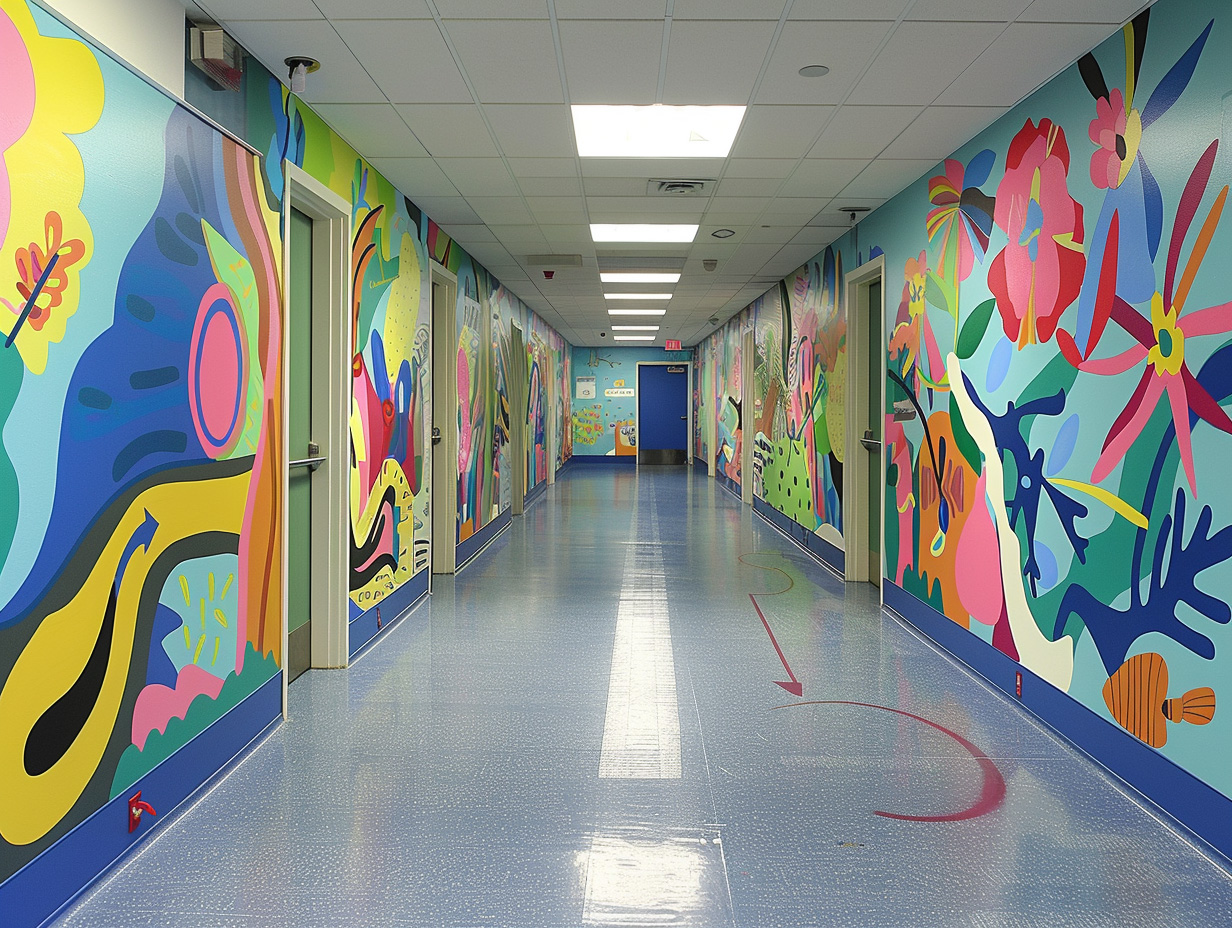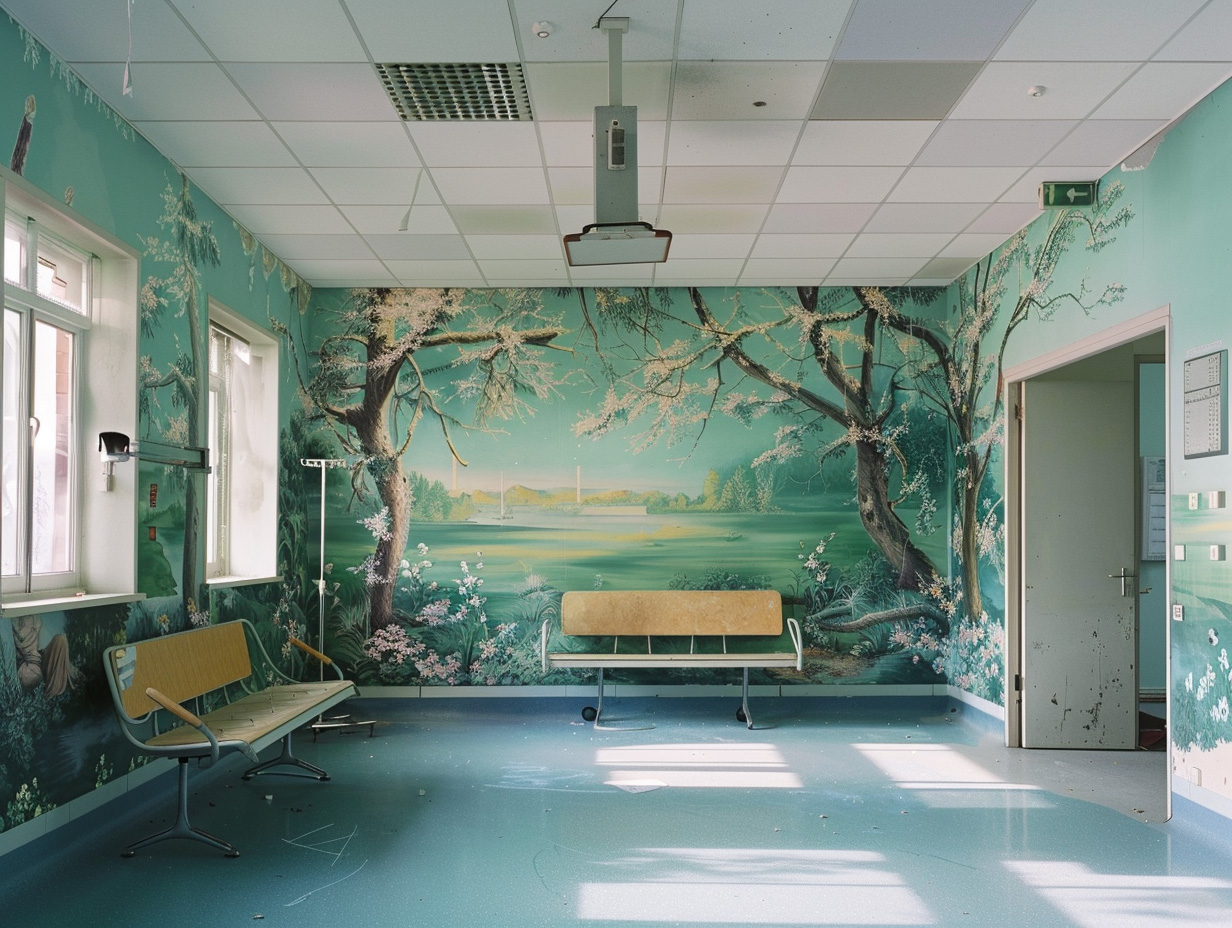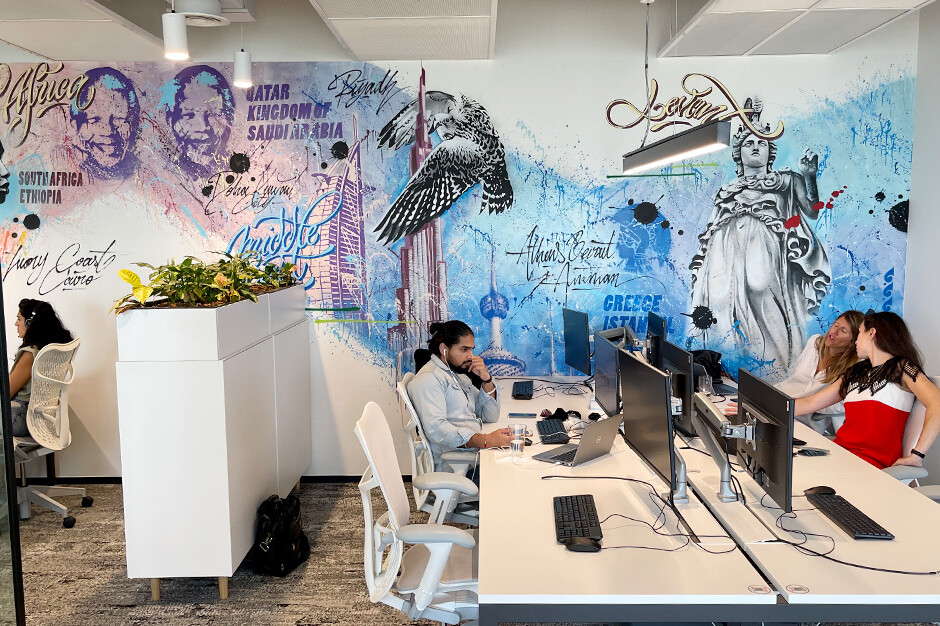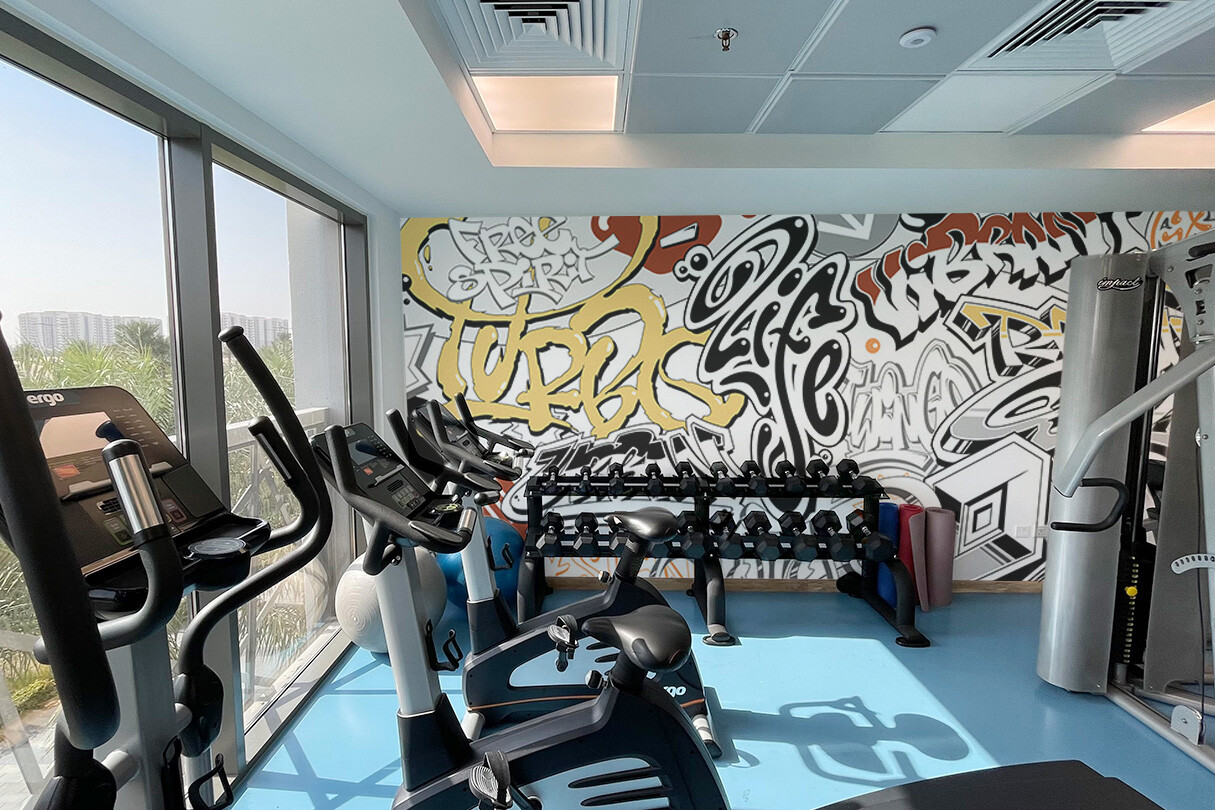Picture this: vibrant murals adorning the walls of children’s hospitals, not merely as decorative elements, but as conduits of hope, resilience, and comfort. This blog post delves into the extraordinary realm where Healing Art intertwines with the innovative concept of therapeutic murals, breathing life into sterile spaces and nurturing young souls on their path to recovery. As we explore the intersection of wellness through creativity, a profound narrative unfolds – one where brushstrokes wield a healing touch, where colors whisper tales of courage, and where every line drawn becomes a beacon of patient inspiration. Within the confines of these hospital walls, art transcends its conventional boundaries, paving the way for art therapy to flourish and shape a new paradigm in healthcare. Join us on a journey through Dubai’s children hospitals, where the transformative power of Healing Art awaits, ready to etch stories of resilience and renewal on the canvas of young hearts.
 The Concept of Healing Art in Healthcare
The Concept of Healing Art in Healthcare
Healing Art is a concept that has gained significant recognition in the field of healthcare. It goes beyond traditional medical practices and embraces the power of art to promote well-being and aid in the healing process. In Dubai’s children hospitals, this concept has taken on a whole new dimension with the introduction of therapeutic murals.
Therapeutic murals are not just decorative elements; they are carefully designed artworks that aim to create a healing environment for young patients. These murals incorporate elements of nature, vibrant colors, and inspiring imagery to uplift spirits and provide a sense of comfort. The intention is to transform sterile hospital spaces into warm and inviting places that foster hope, resilience, and positivity.
Studies have shown that Healing Art can have a profound impact on patients’ mental, emotional, and physical well-being. It has been found to reduce stress levels, alleviate anxiety and depression, improve mood, enhance cognitive function, and even accelerate the healing process. By integrating art into healthcare settings, children hospitals in Dubai are harnessing the power of creativity to create an environment conducive to healing.
Impact of Art on Pediatric Patients’ Well-being
The impact of art on pediatric patients’ well-being cannot be overstated. For children going through medical treatments or extended hospital stays, it can be an overwhelming experience filled with fear and uncertainty. However, when surrounded by therapeutic murals that tell stories of resilience and hope, these young patients find solace.
The vibrant colors used in these murals stimulate positive emotions and create a sense of joy amidst challenging circumstances. They serve as distractions from pain or discomfort by capturing children’s attention and transporting them into imaginative worlds where anything is possible. This immersion in art helps alleviate their anxiety while providing them with a much-needed escape from their medical realities.
Moreover, art has the power to ignite the imagination and spark creativity. By engaging with these murals, children are encouraged to express themselves and explore their own artistic abilities. This creative outlet not only helps them cope with their medical conditions but also fosters a sense of empowerment and self-confidence.
 Collaborating with Artists for Hospital Transformation
Collaborating with Artists for Hospital Transformation
The creation of therapeutic murals in Dubai’s children hospitals is a collaborative effort between healthcare professionals and artists. These collaborations bring together the expertise of medical practitioners and the artistic vision of talented individuals, resulting in spaces that are both aesthetically pleasing and emotionally nurturing.
Artists play a crucial role in understanding the needs of young patients and translating those needs into visual representations. They work closely with healthcare teams to ensure that the murals align with the hospital’s mission, values, and patient demographics. The result is a harmonious integration of art into healthcare settings that resonates with children and their families.
Through this collaboration, artists also contribute to creating an inclusive environment where diversity is celebrated. They incorporate elements from different cultures, traditions, and stories into their artwork, ensuring that every child feels represented and understood. This cultural sensitivity adds another layer of healing to the overall experience for patients from various backgrounds.
 Evaluating the Long-term Effects of Therapeutic Murals
Evaluating the Long-term Effects of Therapeutic Murals
The long-term effects of therapeutic murals in Dubai’s children hospitals are being evaluated through ongoing research studies. These studies aim to measure the impact of Healing Art on patient outcomes, including psychological well-being, pain management, length of hospital stay, and overall satisfaction.
Preliminary findings have been promising, indicating that therapeutic murals have a positive influence on young patients’ recovery journeys. Children who are exposed to these artworks show improved emotional resilience, reduced anxiety levels during medical procedures, and a greater sense of control over their healthcare experiences.
Furthermore, the benefits extend beyond the patients themselves. Families and caregivers also experience a sense of comfort and reassurance when surrounded by these healing environments. The presence of therapeutic murals creates a supportive atmosphere that fosters open communication, trust, and collaboration between healthcare providers and families.
Transforming Hospital Environments with Color Psychology
Color psychology plays a significant role in the transformation of hospital environments through therapeutic murals. Different colors evoke different emotions and have varying effects on individuals’ well-being. In Dubai’s children hospitals, this knowledge is leveraged to create spaces that promote healing and enhance patient experiences.
For example, soothing shades of blue are often used in areas where relaxation is key, such as waiting rooms or recovery spaces. These colors have a calming effect on the mind and help reduce stress levels. On the other hand, vibrant hues like yellow or orange are incorporated into playrooms or activity areas to stimulate energy, creativity, and positivity.
The strategic use of color in therapeutic murals ensures that each space within the hospital serves its intended purpose effectively. It creates an environment that is not only visually appealing but also conducive to healing on multiple levels.
Evaluating the Success of Therapeutic Murals in Children’s Hospitals
The success of therapeutic murals in children’s hospitals is measured through various indicators. These include patient feedback surveys, observations by healthcare professionals, and quantitative data analysis.
Patient feedback surveys provide valuable insights into how young patients perceive their surroundings and how they feel about their overall hospital experience. Observations by healthcare professionals help gauge changes in patient behavior, emotional well-being, and engagement with art therapy activities.
Quantitative data analysis involves tracking metrics such as length of hospital stay, medication usage, and readmission rates. By comparing these metrics between hospitals with therapeutic murals and those without, researchers can determine the impact of Healing Art on patient outcomes.
Overall, the success of therapeutic murals in children’s hospitals is evident in the smiles on young faces, the stories of resilience shared by patients and their families, and the positive shift in healthcare environments. Dubai’s children hospitals have embraced Healing Art as a transformative force that inspires hope, nurtures creativity, and paves the way for a brighter future for young patients.
Related Posts
4 novembre 2023
The Impact of Graffiti Art in Dubai’s Business Environment
Discover how graffiti art is…
17 mai 2023
Elevating food courts: the impact of art murals in Dubai
In Dubai's competitive food court…
16 mai 2023
Unleash the Power of Art: Transforming Dubai Gyms into Inspirational Spaces
In the competitive fitness landscape of…


